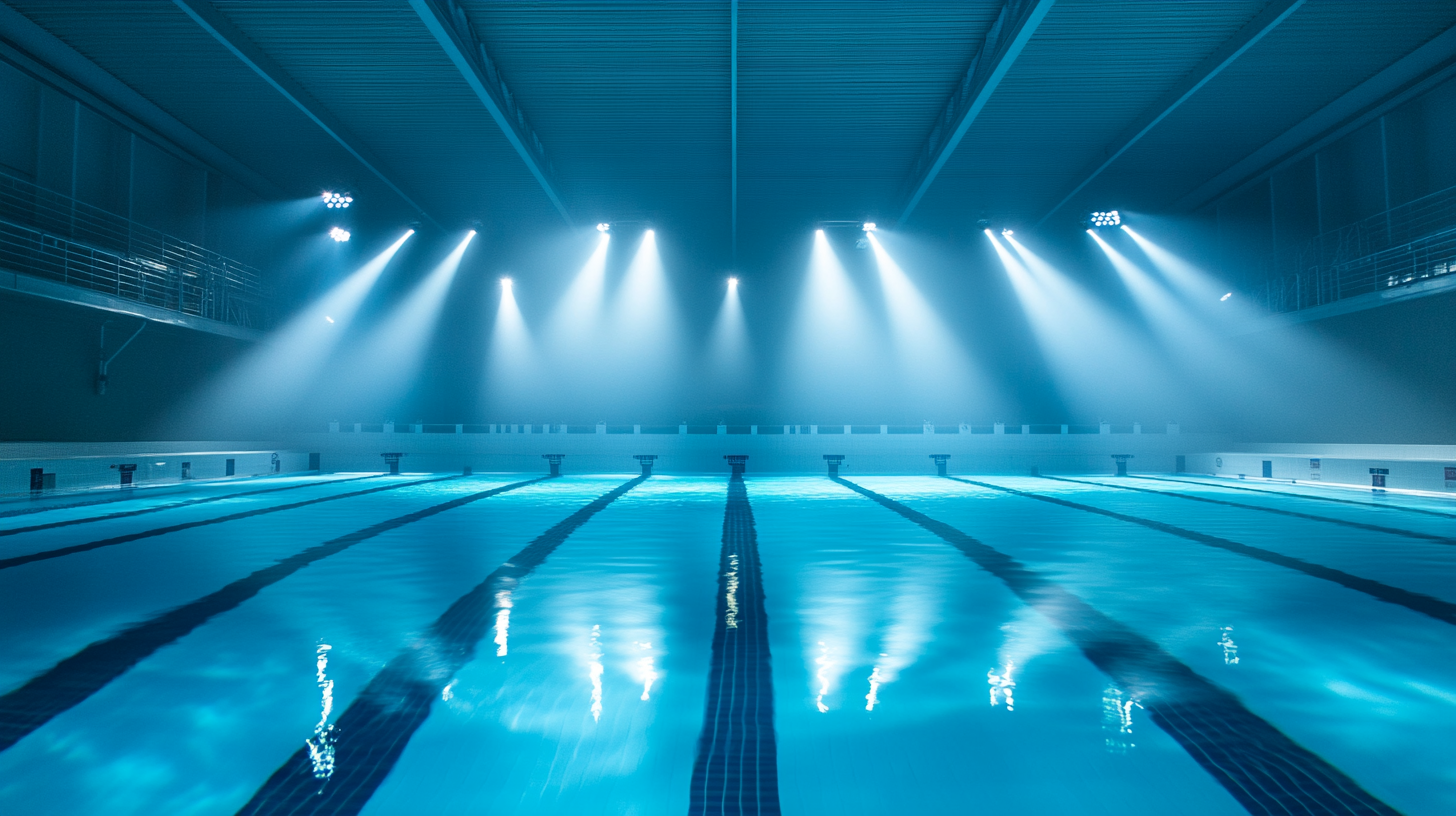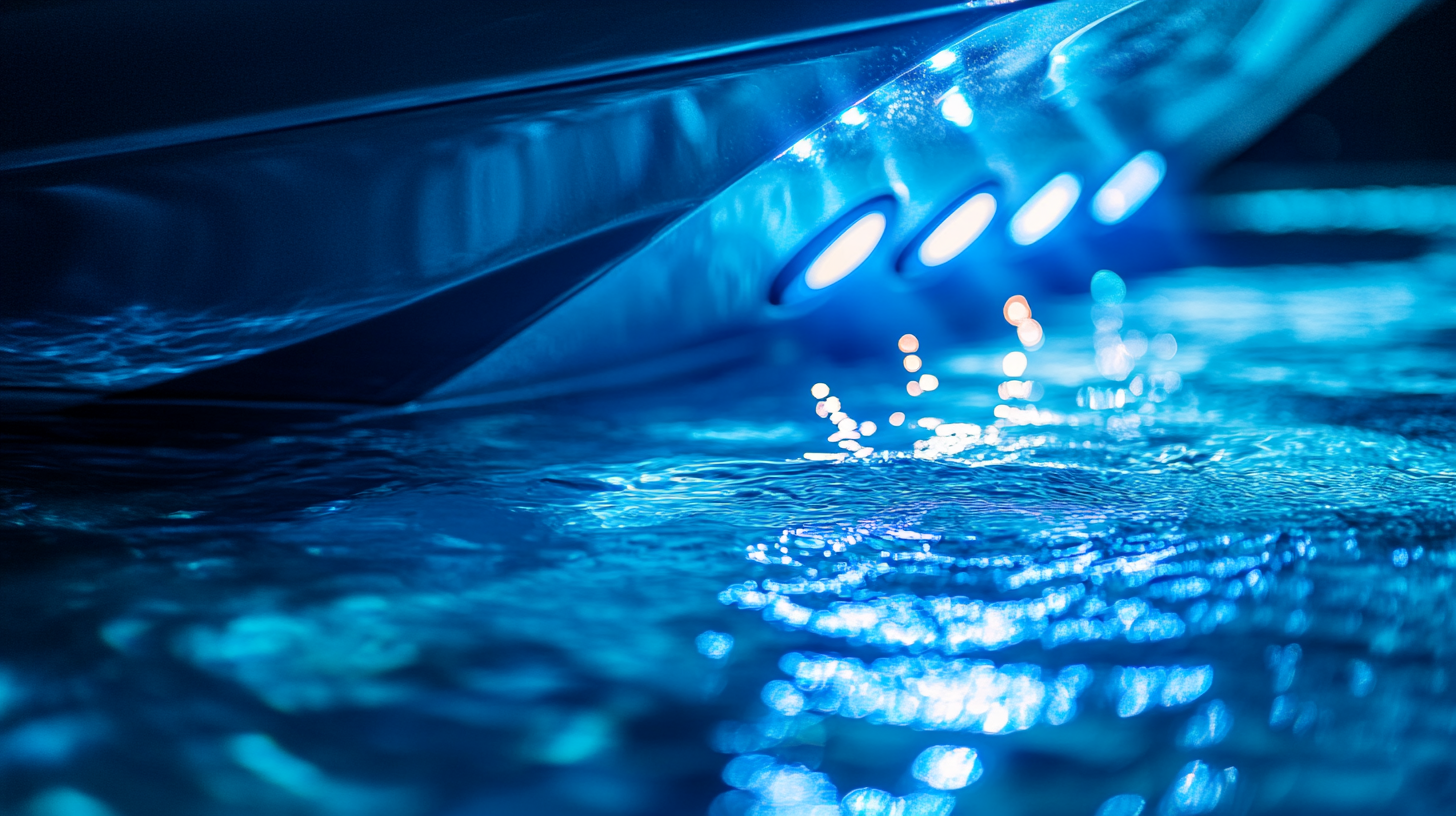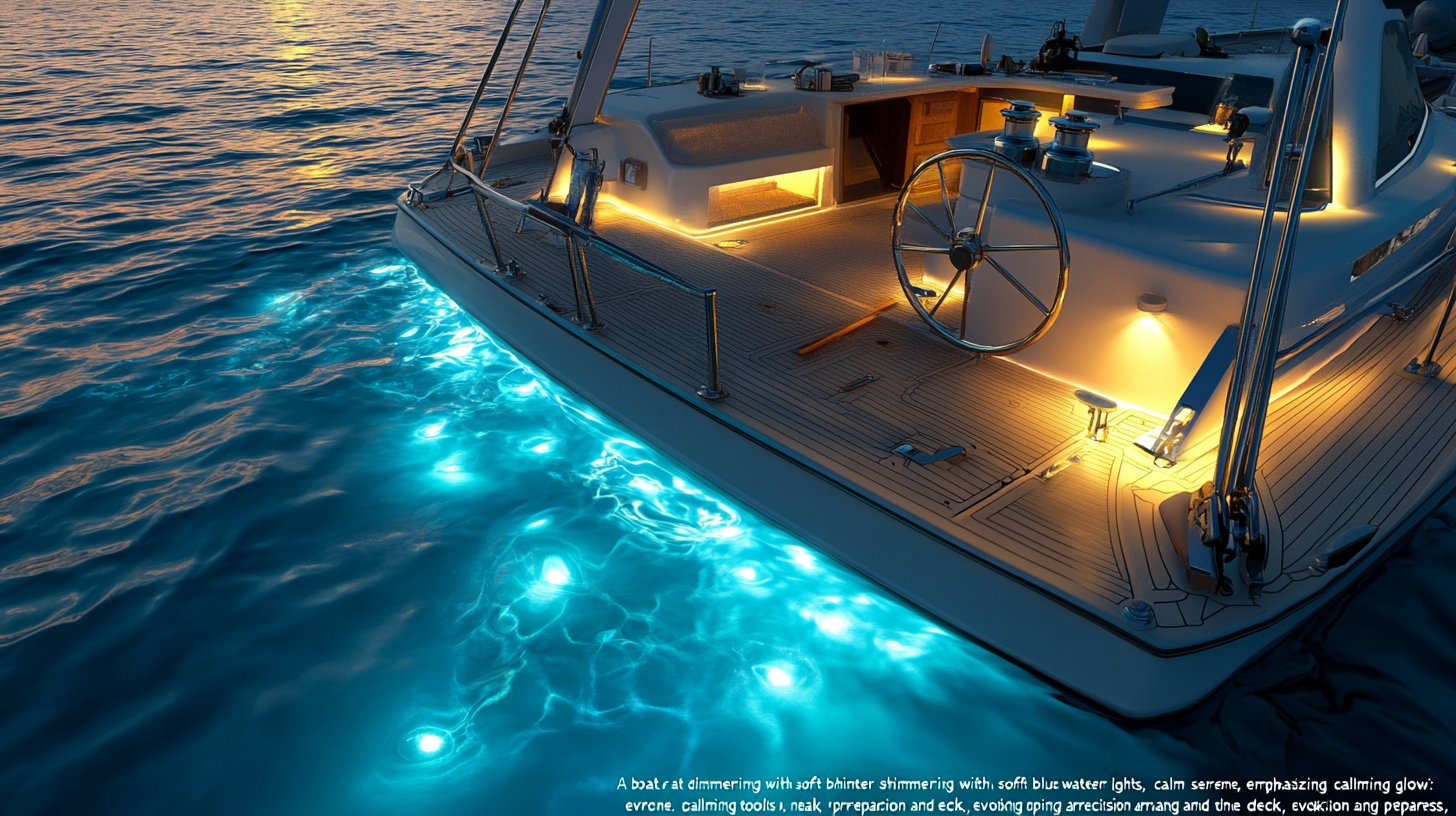Selecting underwater pool lights for Olympic-size pools
When it comes to selecting the right underwater pool lights for Olympic-size pools, there are several key factors to keep in mind. First and foremost, consider the size of the pool; with such a vast area to illuminate, the lighting needs to ensure even, adequate coverage across the entire pool. This isn’t just about aesthetics — visibility is crucial, especially during night-time training or events. Proper illumination helps swimmers, coaches, and lifeguards maintain visibility and ensure safety. On that note, it’s essential to account for the depth of the pool. As you go deeper, the quality of light diminishes, so deeper pools might require more powerful lights or a different placement strategy.
Another important factor is selecting lights with the right color temperature. Pools with warmer tones (around 3000K) offer an inviting, relaxing feel but may not be ideal for high-competition environments. A cool white light (closer to 5000K) provides a sharper, crisper look and enhances visibility, making it a strong choice for professional or Olympic-size pools. Additionally, pay attention to the beam angle. Wider beam angles are great for spreading light across large areas, while narrower beams provide more focused lighting in specific zones.
Durability is another key consideration when selecting underwater pool lights, particularly in such a demanding environment. These lights must withstand frequent chemical exposure from chlorine as well as constant submersion in water. Opting for lights with a high-quality, corrosion-resistant build is non-negotiable for longevity, so be sure to look for high IP (Ingress Protection) ratings to ensure they are built for the tough job ahead. The materials of the lights affect not just their durability, but also their ability to remain visually appealing, avoiding discoloration or wear over time.
Remember to consider ease of installation and replacement. Olympic-size pools often require high-intensity practice schedules and events, which means having pool lights that are easy to access for maintenance or adjustments is a practical requirement, especially in large venues.
Types of underwater lighting technology
When selecting underwater pool lights for Olympic-size pools, it’s essential to understand the different types of lighting technologies available. Each type offers distinct advantages, and your choice will largely depend on your specific needs, budget, and the pool’s usage. Let’s dive into the three most common underwater lighting technologies used today: halogen, fiber optic, and LED lights.
First, halogen lights have been a classic choice for many years and are known for their durability and consistent light output. These lights use a tungsten filament inside a small bulb filled with halogen gas. They emit a warm, bright light that can easily penetrate the water, especially useful in larger and deeper pools. However, halogen lights are less energy-efficient compared to more modern options, and they generate a significant amount of heat, which can sometimes require additional cooling measures. They also tend to have shorter lifespans, meaning they may need to be replaced more frequently—a crucial consideration when maintaining an Olympic-size pool, where accessibility for repairs isn’t always simple or convenient.
Next up is fiber optic lighting. This option works by housing a light source outside of the pool and transmitting the light through thin fibers which terminate at various points inside the pool. The biggest advantage here is easy maintenance since the light bulbs are located outside the water and can be accessed without draining the pool or going underwater. This is a big win for facility managers handling large swimming venues in the midst of a bustling competitive schedule. However, fiber optic systems typically provide less illumination than other options, which may not be sufficient for the vast expanse of an Olympic-size pool—especially when strong visibility and uniform light distribution are important.
Undoubtedly the most modern and versatile option is LED lighting, and for good reason. LED (light-emitting diode) lights have revolutionized the underwater lighting world with their energy efficiency, long lifespan, and low heat production. These lights are extremely adaptable, capable of producing both vibrant whites and a wide array of colors, which can even be programmed to shift and change during an event, adding flair to any competitive or recreational setting. LEDs are by far the most energy-efficient of the options and offer a substantially longer lifespan than halogen lights, meaning fewer disruptions for replacements. For large pools like Olympic-size facilities, the placement of LEDs can be optimized for even and bright illumination, making sure every corner is well-lit. Though they often come with a higher upfront price tag, their longevity and energy savings make them a cost-effective choice in the long run.
As pool lights play a dual role in both enhancing the pool’s ambiance and ensuring swimmer safety, choosing the right type of lighting is crucial. While halogen lights may suit smaller budgets and deliver consistent performance, LEDs are quickly becoming the go-to option for Olympic-size pools due to their efficiency, flexibility, and ease of maintenance.
Energy efficiency and cost considerations
When it comes to Olympic-size pools, energy efficiency has become an increasingly significant factor in selecting underwater pool lights. Given the massive size of the pool and the number of lights required to achieve full illumination, energy consumption can quickly add up. This is why evaluating long-term operating costs, in addition to the initial price of the lighting units, is crucial. One of the most compelling reasons to opt for more modern lighting technologies, specifically LEDs, is their remarkable cost-benefit ratio in terms of energy efficiency.
LED lights, for instance, are known to consume significantly less electricity compared to traditional halogen or incandescent bulbs. While halogen lights offer a powerful light output, their downside is a higher energy draw, making them both costly to operate and less eco-friendly. In contrast, LEDs convert nearly 90% of their energy into light rather than heat, while halogens lose a substantial portion of energy in the form of heat, which not only wastes energy but can also lead to additional cooling requirements. Over time, the energy savings from using LED lights in an Olympic-size pool can be particularly impactful. Facilities that switch from halogen to LED lighting often report a reduction of up to 80% in energy costs, making LEDs an obvious contender for large-scale pools built for competitive use.
However, energy considerations don’t stop there. The initial installation costs, bulb lifespans, and upkeep should all be part of the decision-making process. LEDs, though more expensive upfront compared to other lighting systems, have incredibly long lifespans—often 50,000 hours or more. This drastically reduces the frequency of replacements over time, which is a critical factor when you consider the logistical challenges of maintaining lights in a large aquatic arena. Bulb replacement for an Olympic-size pool can be a complex (and costly) ordeal, requiring specialized equipment or even pool closure. Therefore, by opting for pool lights with longevity and energy savings, management teams can minimize labor costs and pool downtime.
Furthermore, it’s important to take a closer look at lighting controls and automation to enhance energy efficiency. Many modern LED systems are compatible with smart lighting controls that allow you to adjust the lights according to specific needs, such as dimming during non-competitive hours or switching to energy-saving settings during cleaning and maintenance. This level of automation not only reduces energy consumption but also extends the life of the bulbs by preventing unnecessary wear and tear.
Another factor to consider is rebate programs and local incentives for energy-efficient upgrades. In some regions, upgrading an Olympic-size pool to energy-efficient lighting systems like LEDs may qualify the facility for government rebates, grants, or tax incentives aimed at encouraging the adoption of greener technologies. Such opportunities can help mitigate the initial costs of purchase and installation, making it even more economically viable to invest in top-of-the-line, energy-efficient lighting solutions.
In short, selecting energy-efficient pool lights is vital for both cutting costs and promoting sustainability, especially in Olympic-size pools where the sheer size of the installation amplifies energy consumption. While LEDs may have a higher initial price, their long-term financial and environmental benefits far outweigh those costs, making them the go-to choice for anyone looking to illuminate an Olympic-size pool in an efficient and budget-friendly way.
Safety standards and regulations
Compliance with local and international safety standards is crucial when selecting pool lights for Olympic-size pools. These lights operate in submerged environments and are exposed to chemicals, placing a premium on both electrical and structural safety. One of the primary concerns is ensuring that the lights are rigorously designed for underwater use, which involves adhering to specific certifications and regulations to prevent electrical failures, water leaks, and durability issues that could compromise swimmer safety.
In the United States, for example, underwater pool lights must comply with the National Electrical Code (NEC) standards, particularly Article 680, which outlines requirements for pools, fountains, and similar installations. This regulation sets strict rules regarding the installation, placement, and wiring of underwater lights, emphasizing the importance of using Ground Fault Circuit Interrupters (GFCIs) to mitigate the risk of electrical shock. GFCIs are mandated for any pool lighting installation, as they are designed to cut off the power supply if any electrical fault is detected, safeguarding swimmers from the risk of electrocution.
Moreover, lighting systems for Olympic-size pools must meet the International Electrotechnical Commission’s standard IEC 60598-2-18, which governs luminaires used in water-containing spaces. This standard ensures that pool lights are tested for water resistance, heat dissipation, and longevity. One of the critical elements of this specification is the Ingress Protection (IP) rating, which classifies the level of protection the light provides against solid objects and liquids. For underwater applications, a minimum IP68 rating is generally required, indicating that the fixture can be submerged in water continuously without performance degradation. When selecting pool lights for an Olympic-size venue, ensuring adherence to the IP68 rating or better is essential, especially considering the pool’s depth and the need for long-term operation.
Another safety consideration is the use of low-voltage lighting systems. The NEC specifies that any underwater lighting system should operate at a safe, low voltage (typically under 15 volts) to reduce the risk of electric shock. Twelve-volt (12V) LED systems, for instance, are frequently recommended for high-competition pools not only for their energy efficiency but also due to their compliance with safety regulations. Reducing the operational voltage minimizes risks to swimmers and maintenance personnel who might need to interact with lighting systems during pool cleaning or events.
Additional regulations concern the placement and shielding of light fixtures. To avoid glare that could impair visibility for both swimmers and event officials, lights in Olympic-size pools should be installed at precise angles, often recommended between 12 and 18 inches below the water surface. This enhances light dispersion while meeting safety and performance standards. Be mindful of Uniform Swimming Pool Regulations, which also often stipulate the minimum distance between swimmers and lighting fixtures, typically ensuring that no light protrudes into areas where swimmers could accidentally contact them.
To further enhance safety, consider modern lighting systems equipped with shock-proof and thermal-cutoff technologies. Given the extended operational hours required in Olympic facilities, these features help prevent both electrical faults and overheating, ensuring that even during long training sessions and competitions, the pool lights will maintain safe operational standards.
When working with an Olympic-size pool, it is not enough to simply select pool lights that meet basic safety standards; it is imperative that these systems are installed by certified electricians who are familiar with local codes and international guidelines. From anti-corrosion requirements in chemical-heavy environments like pools treated with chlorine or saltwater systems, to the intricacies of correctly grounding electrical circuits to avoid hazard risks, following proper installation guidelines shields you from both legal liabilities and potential accidents.
In summary, safety standards are not just a formality—they are a central part of selecting and maintaining pool lights for Olympic-size pools.
Maintenance and durability of pool lights
When selecting pool lights for Olympic-size pools, maintenance and durability are crucial considerations. Olympic-size venues demand lighting systems that are not just reliable but also built to endure intense usage, chemical exposure, and constant underwater conditions. Ensuring that your underwater lights maintain peak performance requires more than just picking the right model—it’s about making sure they are durable enough to handle the unique challenges these environments pose.
One of the top factors influencing the longevity of pool lights is the material used in their construction. Olympic-size pools are typically treated with chemicals like chlorine or bromine, and these substances can corrode or degrade inferior-quality materials over time. High-grade stainless steel, marine-grade aluminum, and other corrosion-resistant materials are the industry gold standard. Polished stainless steel, for instance, doesn’t just resist rust but also maintains its aesthetic appeal, while UV-stable polycarbonate lenses help protect the lights from potential discoloration and cracking. The last thing you want is for your beautiful illumination to be marred by cloudy lenses or rusting casings!
Another necessity for maintaining your pool lights is regular cleaning. Over time, calcium buildup, algae growth, or mineral deposits can affect light output and efficiency. The good news is that with proper maintenance schedules and the use of appropriate cleaning agents, these potential issues can be managed fairly easily. Facilities managers should establish regular maintenance check-ins to ensure any debris or deposits that diminish the brightness of the lights are dealt with effectively. A quick wipe down, along with more significant cleanings post-season, can extend the lifespan of these essential pieces of technology.
A feature that can further aid with maintenance is the modular design, which is becoming increasingly popular among manufacturers of pool lighting systems. Modular components allow for easy replacement of individual parts—like light bulbs or filters—without having to replace the whole fixture. This can be a real lifesaver (both literally and figuratively) when dealing with underwater fixtures in enormous Olympic-size pools, where taking the system offline or draining the pool for repairs might not be feasible.
Durability doesn’t stop at the materials, of course. You also need to consider the electronics. Pool lights in Olympic venues often run for extended periods, whether for regular practice, events, or even night swimming. This continual operation requires a lighting system that can handle prolonged use without excessive deterioration. Many LED systems—already known for their excellent energy efficiency—also boast impressive durability. LEDs are designed to operate for tens of thousands of hours, which drastically reduces downtime for maintenance. If you’re selecting pool lights for an Olympic-size venue, you’ll definitely want to make use of long-life options like these to limit disruptions.
An equally important aspect of durability is choosing lights with a high IP (Ingress Protection) rating, which indicates how well the fixture is sealed against water and solid particles. For Olympic-size pools, which require constant submersion and are frequently subjected to cleaning chemicals, an IP68-rated light is typically the best choice. These fixtures are designed to operate flawlessly underwater, even when exposed to high levels of pressure from deeper pool sections.
When it comes to replacements, consider accessibility. Changing lights in a home pool might be as simple as popping the bulb out, but Olympic-size facilities involve complexities such as restricted access to the lights without heavy equipment, specialty divers, or even draining large portions of the pool. To minimize downtime and potential closures, select pool lights that are compatible with magnetic induction systems or quick-release mechanisms, which allow for easier swapping of lights without impacting routine operations. Some high-end systems even allow for remote troubleshooting and diagnostics, so you can identify and fix an issue before it escalates.
Lastly, shock resistance and thermal management features can extend the lifespan of your pool lights. Pools, especially those used for high-level competition, frequently undergo extreme shifts in usage. A pool that is packed with swimmers one hour may cool considerably when left unused the next. The repeated exposure to these fluctuating conditions can stress the lights, but models with overheat protection or thermal sensors are designed to adjust to naturally changing conditions, ensuring that the components last longer. Similarly, having lights with shock resistance helps protect them from potential damage during the constant use and movement in the pool.
Selecting durable, low-maintenance pool lighting not only preserves the longevity of your system but also ensures minimal disruptions to Olympic-size swimming events. By choosing corrosion-resistant materials, maintaining regular cleanings, and opting for long-life lighting systems, you can keep your pool lights illuminating every stroke, dive, and lap with clarity and reliability. 🌊🌟


